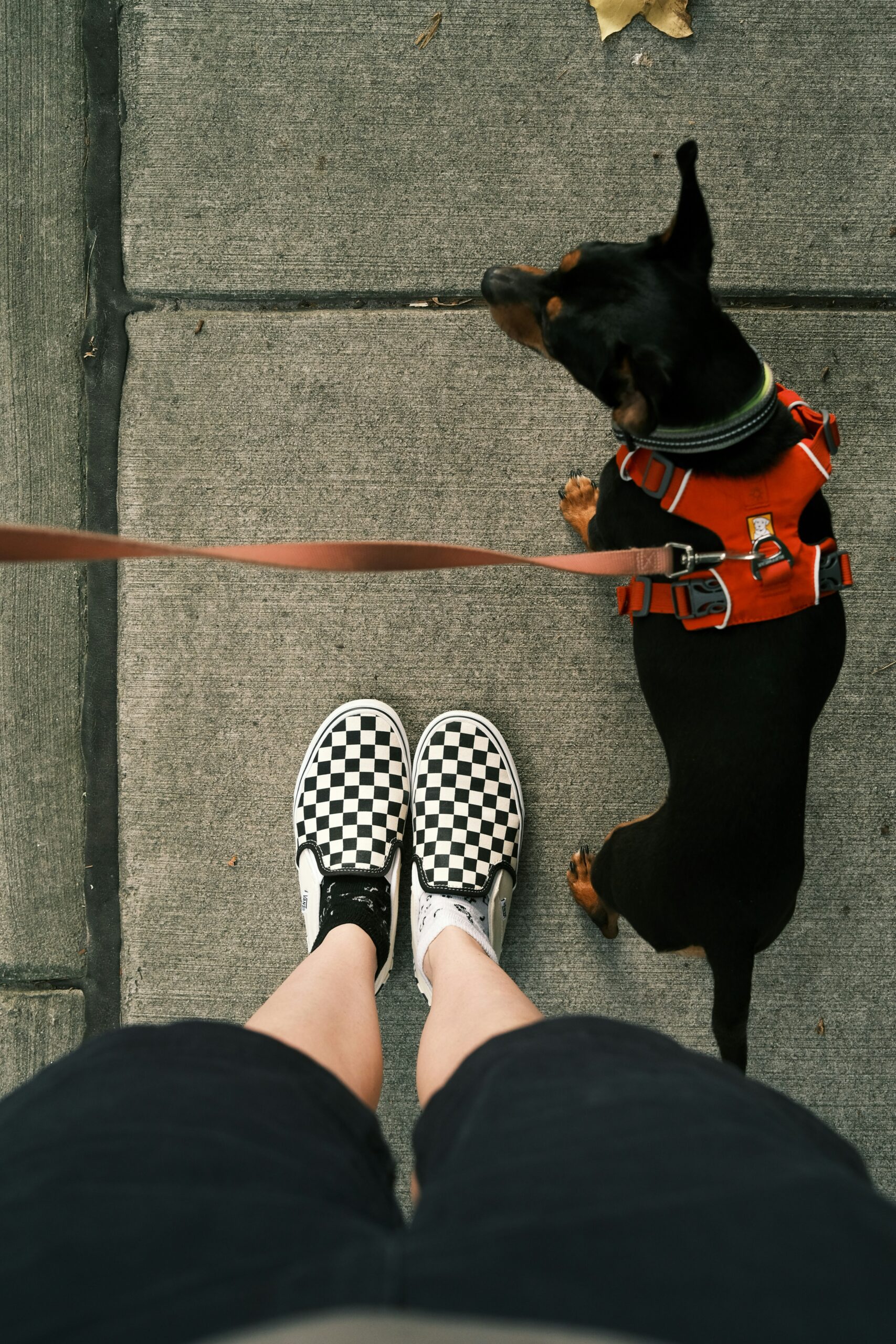Choosing the Right Leash: A Guide to Dog Leashes and Their Proper Use
Choosing the Right Leash: A Guide to Dog Leashes and Their Proper Use
Choosing the right leash: a guide to dog leashes and their proper use. This is a comprehensive guide to different types of dog leashes. Including standard, retractable, hands-free, and training leashes, and how to choose the right leash for your dog’s size, breed, and behavior, with emphasis on proper leash management for training and safety.

Overview of Different Types of Dog Leashes
Choosing the right leash: using this guide to help. Dog leashes play a significant role in ensuring the safety and control of our furry companions. Especially during walks and training sessions. Choosing the right leash for your dog’s size, breed, and behavior is crucial to their well-being and behavior modification. Proper leash selection can impact training effectiveness and prevent potential safety hazards.
There are various types of dog leashes available, each serving different purposes and catering to diverse needs. Standard leashes are commonly used for everyday walks and exercise, offering pet parents a reliable option when paired with a harness. On the other hand, retractable leashes, while providing dogs with more freedom to roam, are generally not recommended due to safety concerns like rope burns and lack of control. Hands-free leashes offer convenience during activities like running or hiking, allowing dog owners to maintain control while keeping their hands free. Additionally, training leashes are specifically designed to aid in modifying dog behavior, making them a valuable tool for professional trainers.
Types of Dog Leashes
When considering the types of dog leashes available, it’s essential to weigh their benefits and drawbacks to make an informed decision based on your dog’s specific needs and your training goals.
A standard leash is a versatile option suitable for everyday walks and exercise routines. These leashes come in various lengths and materials to accommodate different preferences and activities. Pet parents looking to provide their dogs with more freedom while maintaining control, retractable leashes are an option. Although they come with safety concerns and risks. Hands-free leashes offer convenience during activities like running or hiking, allowing dog owners to maintain control while keeping their hands free for other tasks. Training leashes, on the other hand, are tailored to assist in behavior modification and training sessions, making them ideal for dogs with specific training needs.
Benefits of Different Leashes
Slip leads are particularly useful for training young dogs not to pull during walks. These leashes are quick and easy to attach to the dog’s collar. Making them a convenient tool for training puppies effectively. For example, the slip lead from Pet’s company is five feet long and reflective for added safety during nighttime walks.
Martingale leashes, another option, are commonly used for training to prevent pulling and provide better control, especially for dogs that tend to back out of traditional collars. For instance, martingale leashes are a popular choice for dogs that have a tendency to escape from regular collars or slip out of them, as the design prevents such incidents while still providing comfort and control during walks.
Harness leads offer a safer and more humane alternative to attaching a leash directly to a collar, distributing the dog’s weight more evenly and reducing strain on the neck, making them suitable for dogs prone to pulling. These leads are recommended for dogs with a tendency to pull on walks, as they help in preventing injuries and discomfort caused by the strain on the neck, ensuring a more comfortable and safer walking experience for both the dog and the owner.
Proper Leash Management Techniques
Proper leash management plays a crucial role in ensuring effective control and training of dogs. One of the fundamental techniques is holding the leash in front of your torso. This not only provides better control but also allows for quick responses to any sudden movements by the dog. Therefore, enhancing safety during walks and training sessions. For instance, when a dog tries to pull or veer off course, having the leash in front of you enables a prompt correction, reinforcing positive behavior.
Furthermore, changing directions while walking is a valuable method to engage the dog during training. By altering your path unexpectedly, you encourage the dog to focus on you, promoting attentiveness and responsiveness. This approach is particularly beneficial for teaching dogs to walk politely on a leash. It can be a powerful tool in redirecting undesirable behaviors, such as lunging or excessive pulling, into more controlled and harmonious interactions. Through consistent application of these management techniques, dog owners can establish a strong foundation for well-mannered and obedient canine companions.
 Safety Considerations
Safety Considerations
Safety considerations of a correctly fitted harness plays a crucial role in maintaining their well-being. Unlike attaching a leash directly to the collar, using a harness is deemed safer and more humane. By distributing the pressure more evenly around the body, a harness prevents injuries and discomfort that may result from pulling on the neck. This setup provides pet owners with enhanced control over their dog in a variety of situations, promoting a safer and more comfortable walking experience for both the dog and the owner.
One of the safety precautions to bear in mind is to steer clear of retractable leashes. These come with inherent safety concerns. While retractable leashes offer dogs more freedom to roam during walks, they lack the control necessary for guiding a dog effectively. These leashes are particularly unsuitable for dogs that are still in the learning phase of walking politely on a leash. They can lead to entanglement and potential injuries if not handled correctly. Opting for a traditional leash attached to a well-fitted harness remains a safer choice. Prioritizing the safety and well-being of your four-legged friend.
Conclusion and Recommendations
Choosing the appropriate leash for your dog is a critical decision that can impact their safety, comfort, and training success. Opting for a harness lead over attaching a leash directly to a collar can distribute your dog’s weight more evenly. Reducing strain on their neck. This is especially beneficial for dogs prone to pulling. Harness leads are also recommended by most veterinarians for their safety and humane design.
Furthermore, professional trainers often utilize training leashes to modify dog behavior effectively. These specialized leashes are tailored to address specific training needs and behavioral issues. Offering a targeted approach to training that can yield faster results. A training leash may be used to teach a dog proper walking etiquette, such as heeling or loose leash walking. By employing the right tools, pet owners can navigate training challenges more efficiently and set their dogs up for success. Off Leash K9 Training 30A can help with recommendations on leashes and the correct use of them.





 Safety Considerations
Safety Considerations




